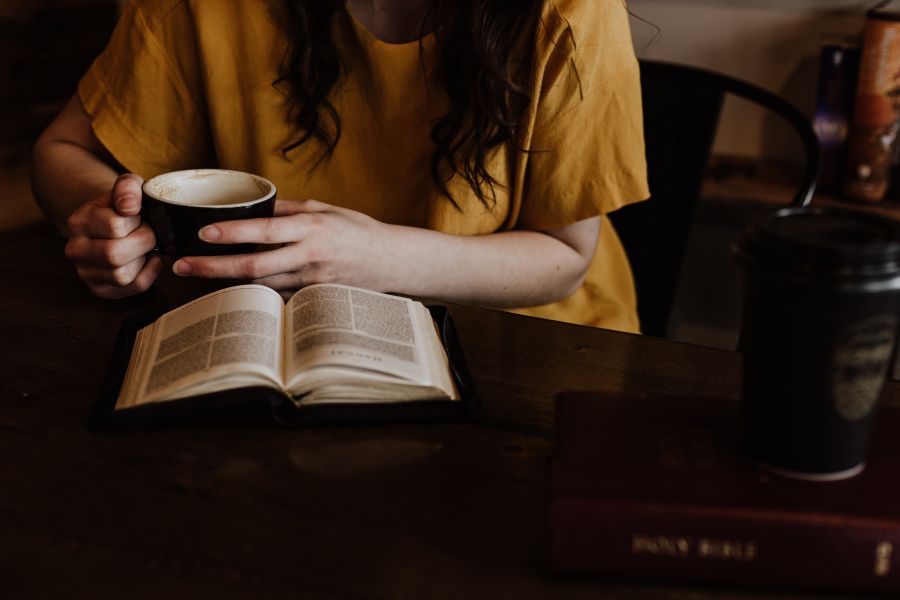泰山碧霞祠英文导游词1
Ladies and Gentlemen,
After a long hard and exhausting climb, here we are in the summit tour area of the mountain. The next spot we’re going to visit is Bixia Temple, a famous Taoist temple on the summit. Look, there it is. It’s on the other end of the Heaven Street. Shall we go? But before we get there, lets’ have a quick view of the picturesque surroundings along the way.
This area is known as the summit tour area of Mt. Tai, and it is a wonderful part of the mountain, which is called a heavenly world. That gate we just stepped in is called South Heaven Gate and the road we’re now walking along is called Heaven Street. How do you feel now? Do you feel that “the sun is nearer and cloud’s lower”, and “ everything around is at your feet except for the sky”?
There are many spots of interest here, including Yuhuang Summit, Bixia Temple, Sunrise View Peak, Sea Pointing rock, Inscriptions on Daguan Peak, and so on. Also enjoyable on the summit are the top four good views of Mt. Tai, i.e. sunrise in the east, sunset glow, ribbon-shaped Yellow River in Distance, jade plates in rolling sea of cloud.
Well, Bixia Temple is coming near, now. Isn’t resplendent bathing in golden sunshine? It was first built in the Song Dynasty, and was rebuilt and renovated for many times during the Ming and Qing dynasties. It was originally named Zhaozhen Temple and got its present name since the Qing Dynasty. It is composed of four gates, three halls, dancing house, drum and bell towers, imperial tablet pavilions, incense burner pavilion. It is divided into two courtyards with a gate between, occupying about 3,900 square meters.
According to Daoism, almost everything has a god, for example, the sun, the moon, wind, rain, thunder, wealth and even the door. These gods are enshrined in Taoist monasteries and temples. Their icons are also found in many homes, especially those in the countryside. For example, people worship the God of Wealth in the countryside in hope of achieving big fortunes. The God of Door is supposed to be able to keep away demons. Well, enshrined in this temple is a female statue named Bixia Godness. Then why do people worship her? We know that in the Dai Temple at the foot of the mountain, there is another God named God of Mt Tai. Since the Song Dynasty, Bixia Gldness has gradually taken the place of the God of Mt Tai as the most powerful immortal. She at first was in charge of sons and heirs. Then her power included control of weal and woe, poverty and health. She could cure people of illness and get rid of disasters at the petition of her disciples. So her powerfulness drew numerous men and women from thousand miles away to pray and pilgrimage in her front. So Bixia Godness became the most powerful and major God of Mt Tai. And Bixia Temple now is a precious treasure among the ancient constructions on high mountains with its fine structures and layout.
Now ladies and gentlemen, here we are in front of the south gate of Bixia Temple. Let’s step in. You can see there are also another two gates, the east one and the west one. The second story built on the south gate is called singing and dancing hall, and the east one is called the bell tower, this is the drum tower. The main structures are in the north courtyard, shall we move on?
Ok, here we are. The biggest building in the middle is the Great Hall. It is divided into five rooms. And it’s 24.7 meters long, 15.1 meters wide, and 13.7 meters in height. It has single extending eaves with traditional Chinese wooden structure. That two inscribed board were written respectively by Kangxi and Qianlong, two famous emperors of the Qing Dynasty. Because it is cold and windy on the summit of the mountain, all the tiles were made of iron or bronze. Now, have you paid attention to the bronze tiles on the roof? There are exactly 360 rows of bronze tiles on the roof, which stands for the 360 days of a whole year on Chinese lunar calendar. Enshrined in the middle of the hall is Bixia Godness, who looks kind and dignified. She’s in green blouse, red skirt and golden ornaments. All these colors were popular in old China. Beside the main hall are two other smaller ones, the east one is for Eyesight Godness, and the west one is for the Godness in charge of sons and heirs.
Also in this courtyard we could see other smaller buildings. Look at the two double-eave pavilions, in the east is the imperial stone tablet of Qianlong. The inscription means renovating Bixia Temple. In the west is the tablet on which inscribed a poem written by Qianlong.
That incense burner opposite the gate was built in the Qing Dynasty. Enshrined in it is also a bronze statue of Bixia Gldness. And beside are two bronze tablets built in the Qing Dynasty. The left one was built in 1615, on it records how the pavilion was built. The right one was built in 1625, and on it records the history of Bixia Temple.
Ok, everybody. So much for Bixia Temple. We have seen the statue of Bixia Godness, the three main halls, the imperial pavilion and tablets, the bell and drum towers. Shall we move on to the next spot?Ladies and Gentlemen,
After a long hard and exhausting climb, here we are in the summit tour area of the mountain. The next spot we’re going to visit is Bixia Temple, a famous Taoist temple on the summit. Look, there it is. It’s on the other end of the Heaven Street. Shall we go? But before we get there, lets’ have a quick view of the picturesque surroundings along the way.
This area is known as the summit tour area of Mt. Tai, and it is a wonderful part of the mountain, which is called a heavenly world. That gate we just stepped in is called South Heaven Gate and the road we’re now walking along is called Heaven Street. How do you feel now? Do you feel that “the sun is nearer and cloud’s lower”, and “ everything around is at your feet except for the sky”?
There are many spots of interest here, including Yuhuang Summit, Bixia Temple, Sunrise View Peak, Sea Pointing rock, Inscriptions on Daguan Peak, and so on. Also enjoyable on the summit are the top four good views of Mt. Tai, i.e. sunrise in the east, sunset glow, ribbon-shaped Yellow River in Distance, jade plates in rolling sea of cloud.
Well, Bixia Temple is coming near, now. Isn’t resplendent bathing in golden sunshine? It was first built in the Song Dynasty, and was rebuilt and renovated for many times during the Ming and Qing dynasties. It was originally named Zhaozhen Temple and got its present name since the Qing Dynasty. It is composed of four gates, three halls, dancing house, drum and bell towers, imperial tablet pavilions, incense burner pavilion. It is divided into two courtyards with a gate between, occupying about 3,900 square meters.
According to Daoism, almost everything has a god, for example, the sun, the moon, wind, rain, thunder, wealth and even the door. These gods are enshrined in Taoist monasteries and temples. Their icons are also found in many homes, especially those in the countryside. For example, people worship the God of Wealth in the countryside in hope of achieving big fortunes. The God of Door is supposed to be able to keep away demons. Well, enshrined in this temple is a female statue named Bixia Godness. Then why do people worship her? We know that in the Dai Temple at the foot of the mountain, there is another God named God of Mt Tai. Since the Song Dynasty, Bixia Gldness has gradually taken the place of the God of Mt Tai as the most powerful immortal. She at first was in charge of sons and heirs. Then her power included control of weal and woe, poverty and health. She could cure people of illness and get rid of disasters at the petition of her disciples. So her powerfulness drew numerous men and women from thousand miles away to pray and pilgrimage in her front. So Bixia Godness became the most powerful and major God of Mt Tai. And Bixia Temple now is a precious treasure among the ancient constructions on high mountains with its fine structures and layout.
Now ladies and gentlemen, here we are in front of the south gate of Bixia Temple. Let’s step in. You can see there are also another two gates, the east one and the west one. The second story built on the south gate is called singing and dancing hall, and the east one is called the bell tower, this is the drum tower. The main structures are in the north courtyard, shall we move on?
Ok, here we are. The biggest building in the middle is the Great Hall. It is divided into five rooms. And it’s 24.7 meters long, 15.1 meters wide, and 13.7 meters in height. It has single extending eaves with traditional Chinese wooden structure. That two inscribed board were written respectively by Kangxi and Qianlong, two famous emperors of the Qing Dynasty. Because it is cold and windy on the summit of the mountain, all the tiles were made of iron or bronze. Now, have you paid attention to the bronze tiles on the roof? There are exactly 360 rows of bronze tiles on the roof, which stands for the 360 days of a whole year on Chinese lunar calendar. Enshrined in the middle of the hall is Bixia Godness, who looks kind and dignified. She’s in green blouse, red skirt and golden ornaments. All these colors were popular in old China. Beside the main hall are two other smaller ones, the east one is for Eyesight Godness, and the west one is for the Godness in charge of sons and heirs.
Also in this courtyard we could see other smaller buildings. Look at the two double-eave pavilions, in the east is the imperial stone tablet of Qianlong. The inscription means renovating Bixia Temple. In the west is the tablet on which inscribed a poem written by Qianlong.
That incense burner opposite the gate was built in the Qing Dynasty. Enshrined in it is also a bronze statue of Bixia Gldness. And beside are two bronze tablets built in the Qing Dynasty. The left one was built in 1615, on it records how the pavilion was built. The right one was built in 1625, and on it records the history of Bixia Temple.
Ok, everybody. So much for Bixia Temple. We have seen the statue of Bixia Godness, the three main halls, the imperial pavilion and tablets, the bell and drum towers. Shall we move on to the next spot?
泰山碧霞祠英文导游词2
The city of Taian, is 150 meters above sea level. Most of the principal scenic spots and historical remains are clustered along an axis extending from the city to the top of the mountain. They are the result of a long historical Process, and are ingeniously placed in order to take advantage of the surrounding topography.
Chinese mythology has it that Mt.Tai was formed from the head of PanGu, one of chinese creators.His four limbs Formed another four mountains. These five mountains are located in the East, West,South,North and the center of China. Mount Tai in the East is the one that is generally the most admired.
The Azure Cloud Temple is the best preserved old structure on Mt.Taishan, which still retains the style and appearance of the Ming an Qing dynasties. Its importance rests with its Good combination of architecture, painting, carving and forest, an illustration of ancient Cinenese culture. It has a building area of 3900 square meters. According to records,it wasFirst built in 1009 of the Song Dynasty, and rebuilt in the Ming and Qing dynasties. Now it is a large ancient complex on the top of Mt. taishan.
The Azure Cloud Temple consists of 12 large structures, such as the Main Hall, the Annexed Hall,the joss stick Hall, the Main Gate, the imperial Stele Pavillion, the Bell Tower and The Sacred Gate. The temple is divided by the main gate into two courtyards. The front counrtyard has three gates. On the Soouth Sacred Gate stand three dancing and singing roomsOver a fire floor where pilgrims burn Joss sticks. Facing the gate is a screen wall, inscribed four Chinese characters万代瞻仰meaning admiration by generations. Two annexed rooms extend notyhward to connect the East Sacred Gate and the West sacred Gate.
The main gate is the bound between the front courtyard and the rear courtyard. Inside the gate is the principal part of the Azyre Cloud Temple. In the center of the courtyard is the Joss stick pavilion, where enshrined is a bronze figurine of the aupreme Lord. On either side of the pavilion stands a huge stele. Besides the Azure Cloud Tem;le itself, the Buddha’s Halo is another miraculous phenomenon. Of the 128 historical sites under preservation on Mt. Taishan, the Azure Cloud Temple is the most important one.
A common saying goes that a mountain will be intelligent if there lives an immortal, no matter how high it is. Mt. Taishan is not only high but also intelligent. Rising abruptly and imposingly1545 meters above sea level from a vast plain, Mt. Taishan became the holy land where emperors of different dynasties made their personal pilgrimages and held ssacrificiall ceremonies. StandjingOn the top of Mt. Taishan, the Azure Cloud Temple, the chief place where sacrificial ceremonies were made, is the highlight attraction on Mt.Taishan.
If you are tired you can have a rest here or take photos. mind you, in 5 minutes. who know the origin of BaoTu Spring, please think it over and I will tell you the reason after 5 minutes.
Thank you.
相关文章
云南幽谷神潭导游词范文2023-06-12 03:43:14
鼓浪屿导游词(通用十五篇))2023-06-03 23:31:50
承德避暑山庄的导游词范文(通用7篇)2023-06-07 22:34:11
西岳华山导游词-陕西导游词2023-06-17 06:21:54
山西省晋商文化博物馆的导游词2023-06-17 07:47:11
景德镇瑶里导游词7篇2023-06-11 10:19:57
上海对外经贸大学和北京交通大学(威海校区)对比哪个好(排名分数线区2024-03-31 16:25:18
河北高考排名237950名物理能上什么大学(能报哪些学校)2024-03-31 16:19:23
山东城市建设职业学院在山东招生人数和招生计划 多少人2024-03-31 16:15:16
上海农林职业技术学院在湖南招生人数和招生计划 多少人2024-03-31 16:12:52
吉林农业科技学院在湖南招生人数和招生计划 多少人2024-03-31 16:09:19
安徽高考多少分可以上云南经贸外事职业学院 招生人数和最低分2024-03-31 16:04:52
景点导游词(十五篇)2023-06-11 20:10:27
四川九寨沟导游词(精选十五篇)2023-06-03 11:44:39
湖北省有名景点导游词2023-06-18 14:24:56





